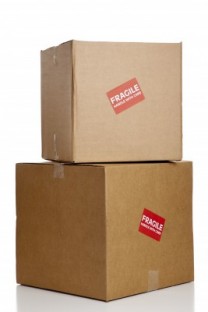 When you receive an order from a customer, the goal is usually to get it out the door and into their hands as soon as possible. But what about multiple orders? Should you ship them separately or in one box?
When you receive an order from a customer, the goal is usually to get it out the door and into their hands as soon as possible. But what about multiple orders? Should you ship them separately or in one box?
When Shipping Solo Is Preferable
Large, Fragile Items: Some products demand more care than others and should always be shipped separately. Take for instance a flat screen television. In order to get it from point A to point B, it needs to be packed carefully with Styrofoam supports on all corners to keep it secure in the shipping box and protect it from any bumps to the exterior of the box. So a good rule of thumb is to package fragile equipment by itself to avoid damage from other items jostling against the product.
Partial Orders: Another reason companies may have to ship separately is if an item is out of stock. The item that is in inventory shouldn’t be held up until the backordered product arrives.
When To Package Items Together
Save On Shipping Costs: The number one reason companies opt to package multiple products together in one box is to save on shipping costs. Prices are not strictly based on weight but also on handling; so having two boxes that weigh the same as one box will usually cost more to ship because the courier still has to deliver (handle) two boxes.
Small, Fragile Items: Not all fragile items need to be packaged separately if the proper packing materials are used. For example, plates and dishes that are stacked appropriately with foam sheets between can actually be stronger and better protected when tightly packaged together. Foam comes in either pouches or sheets and is shock absorbent. It also prevents products from rubbing together and damaging one another.
Large Quantities: Another criterion for shipping items together is the recipient. If you are sending items to a retailer for resale, shipping in large quantities will greatly reduce the overall cost of the product because lower shipping fees will be easier to recoup.
One of the solutions to solving packaging dilemmas is to hand over the responsibility of shipping to a fulfillment company that can create a consistent and efficient process. The fulfillment house will keep your product in inventory and choose the most cost-effective way to get your products in the hands of your customers.